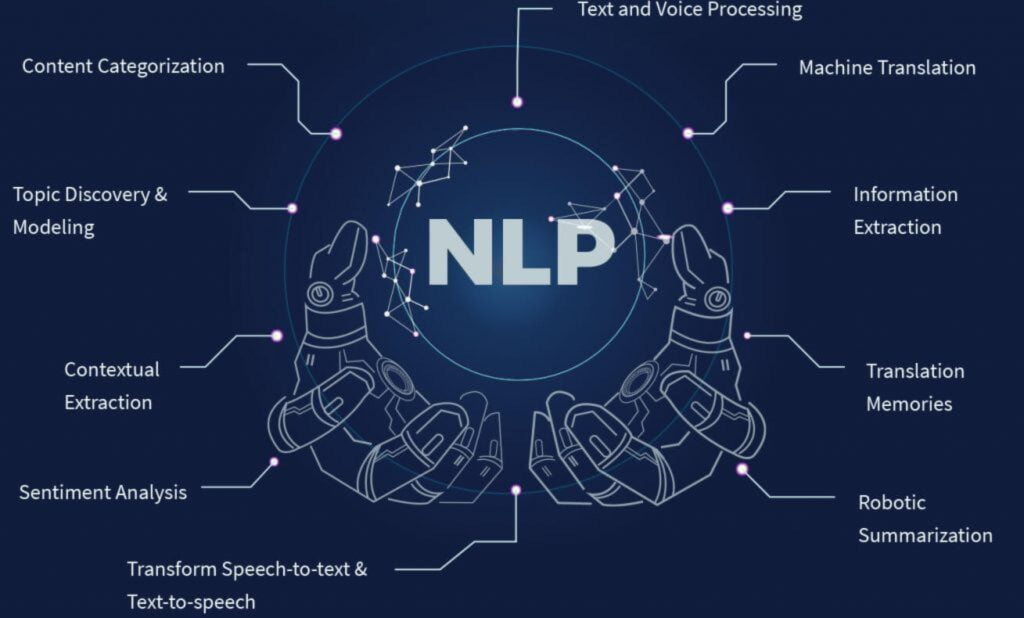Welcome to the world of Natural Language Processing (NLP), where cutting-edge technology merges seamlessly with the intricacies of human language. As an experienced tech professional, I invite you on a journey to explore the wonders of NLP, its inner workings, and its remarkable applications. In this article, we will delve into the realm of NLP, unraveling its secrets and shedding light on how it has revolutionized the way we interact with machines. Prepare to be captivated by the fusion of language and technology that powers NLP.
Understanding Natural Language Processing
At its core, Natural Language Processing (NLP) is an interdisciplinary field that focuses on enabling computers to understand, interpret, and generate human language. It combines elements of linguistics, computer science, and artificial intelligence to bridge the gap between humans and machines. NLP empowers computers to process vast amounts of textual data, extract meaning, and derive valuable insights.
How Natural Language Processing Works
NLP encompasses a range of techniques and algorithms that facilitate language understanding and processing. From parsing and syntactic analysis to semantic understanding and sentiment analysis, NLP algorithms employ sophisticated methods to decipher the nuances of human language. By utilizing machine learning and deep learning models, NLP systems can learn patterns, recognize context, and generate meaningful responses.
Practical Applications of Natural Language Processing
Natural Language Processing finds practical applications in various domains, revolutionizing the way we interact with technology. In customer service, chatbots powered by NLP can provide instant assistance, understanding and responding to user queries with human-like proficiency. Sentiment analysis, another NLP application, helps companies gauge customer feedback, enabling them to enhance their products and services. Moreover, NLP plays a vital role in machine translation, information retrieval, voice assistants, and text summarization.
The Power of Natural Language Processing in Everyday Life
Imagine conversing with your smartphone, asking it to schedule appointments, read emails, or play your favorite music. Thanks to NLP, voice assistants like Siri, Alexa, and Google Assistant can understand your commands and respond accordingly. Additionally, social media platforms employ NLP to analyze and categorize user-generated content, enabling targeted advertising and personalized recommendations. NLP has become an integral part of our daily lives, seamlessly integrating technology into our routines.
Future Possibilities and Advancements in Natural Language Processing
The potential of Natural Language Processing is vast, with ongoing advancements pushing the boundaries of what machines can achieve. As technology continues to evolve, we can expect more accurate language understanding, sophisticated dialogue systems, and enhanced language generation capabilities. NLP holds promise in fields such as healthcare, finance, and education, where it can contribute to medical diagnosis, fraud detection, and intelligent tutoring systems.
Examples of NPL
-
Chatbots: Chatbots are intelligent virtual assistants that utilize NLP to understand and respond to user queries. They can provide customer support, answer frequently asked questions, and assist users in navigating through various services or websites.
-
Sentiment Analysis: Sentiment analysis, also known as opinion mining, uses NLP techniques to analyze and determine the sentiment expressed in text data. It helps companies gauge customer feedback, monitor social media sentiments, and make data-driven decisions based on public opinion.
-
Machine Translation: NLP enables machine translation systems like Google Translate to understand and translate text from one language to another. These systems analyze the grammar, vocabulary, and context of the input text to generate accurate translations.
-
Named Entity Recognition: NLP algorithms can identify and extract named entities such as names of people, organizations, locations, and other important information from text documents. This is useful in various applications, including information retrieval, data analysis, and entity recognition in news articles.
-
Text Summarization: NLP techniques are employed to automatically generate concise summaries of long documents or articles. This helps users quickly grasp the main points of a text without reading the entire content, saving time and improving information accessibility.
-
Voice Assistants: Voice assistants like Siri, Alexa, and Google Assistant utilize NLP to understand and respond to voice commands or queries. They can perform tasks such as setting reminders, providing weather updates, playing music, and controlling smart home devices.
Conclusion
In conclusion, Natural Language Processing has emerged as a transformative force, bridging the gap between human language and technology. From understanding sentiment to enabling voice assistants, NLP has revolutionized how we interact with machines. As technology professionals, let us embrace the potential of NLP, exploring its applications, fostering advancements, and unlocking new possibilities for the future. Dive into the world of NLP and witness the remarkable fusion of language and technology.






